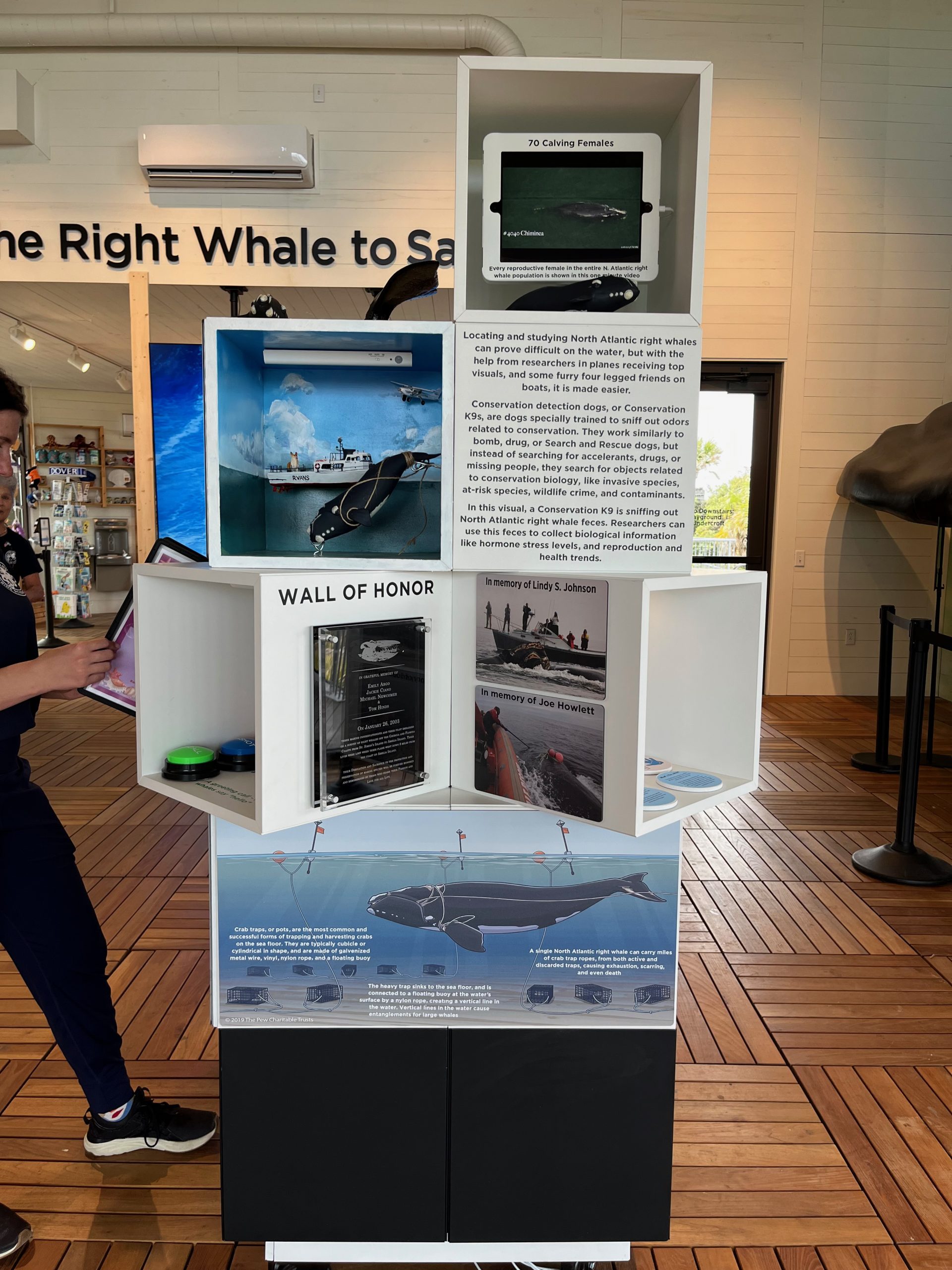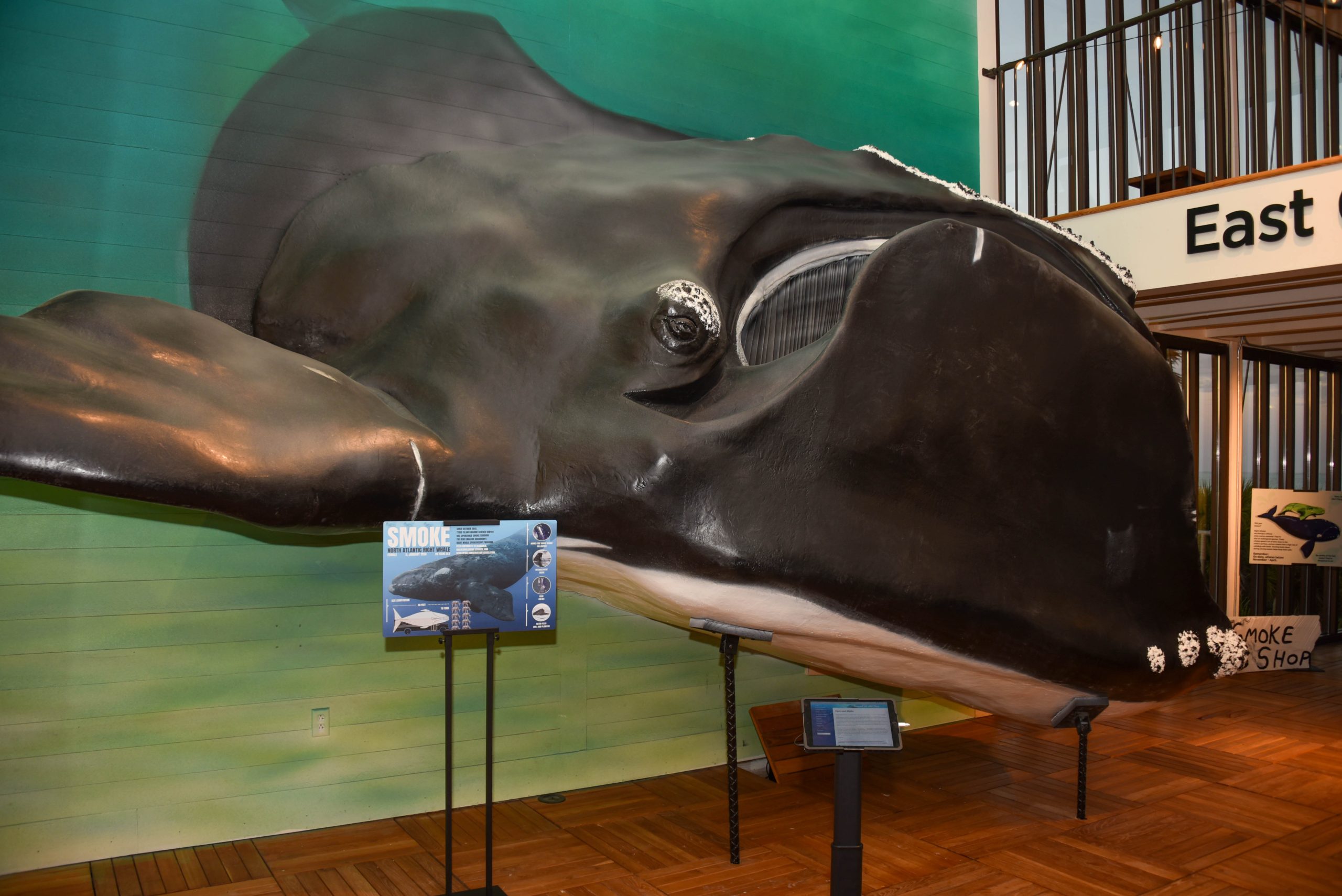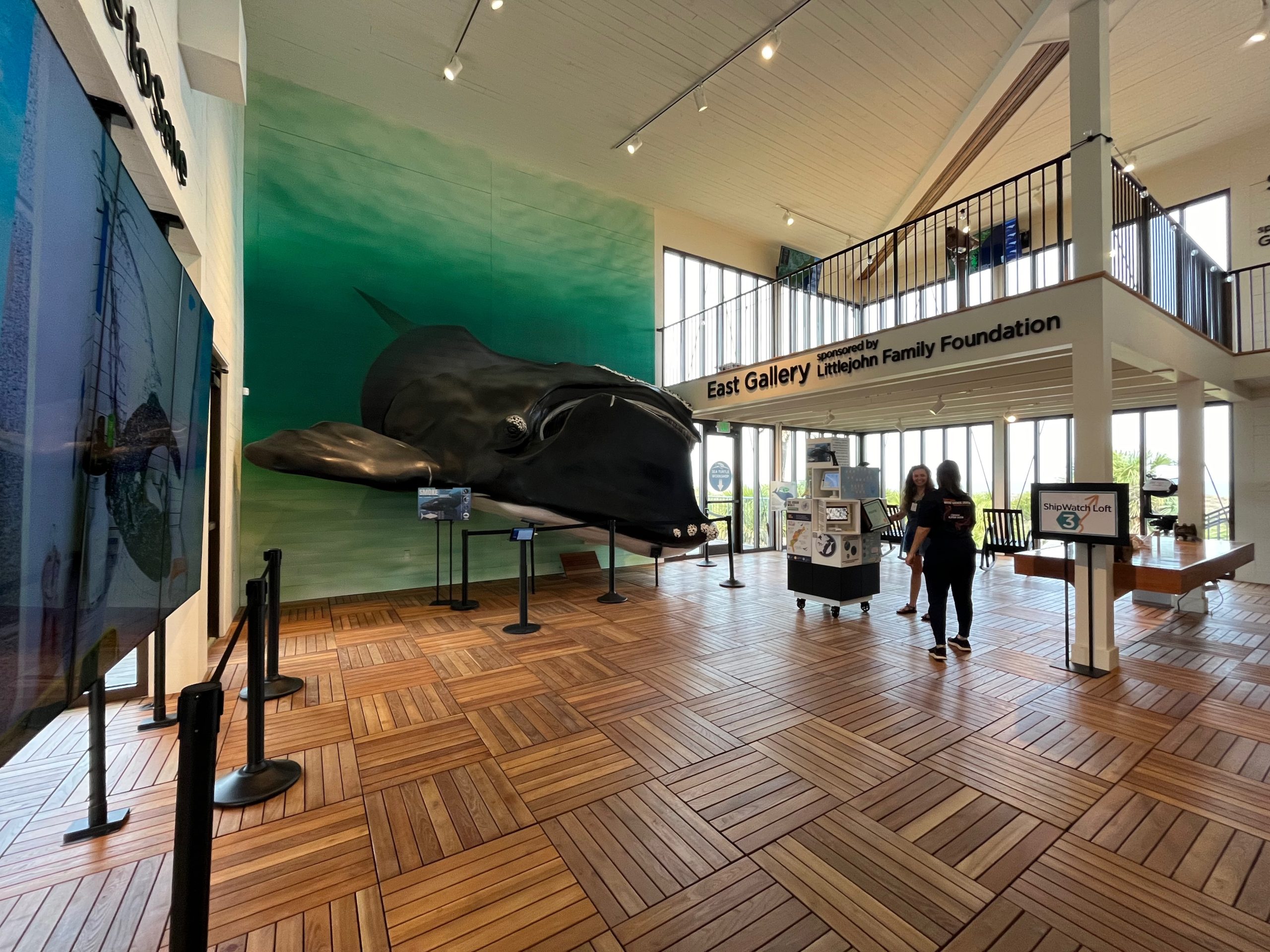The North Atlantic Right Whales, referred to locally as ‘Georgia’s Whales,’ migrate annually from November to March to the Eastern seaboard of the United States to give birth to their calves.
With a population size of approximately 360 and less than 70 reproductive females, the endangered species has a projected extinction by the year 2043.
“Their calving area now is right amidst the shipping lanes and the submarine lanes where they’re dredging all the time,” said Michael Williamson, a marine biologist and the director at WhaleNet. “The right whales are a very unlucky species.”
As a part of the Tybee Marine Science Center’s mission for ecological education and preservation of the local sea life, they launched a new exhibit: The Right Whale to Save. The sculpture and surrounding information stations intend to educate locals, school groups and Tybee tourists about the whale efforts.
One of their biggest goals is to prevent boat-related injuries and deaths.
“It is our obligation as residents of the state to make sure that boaters are following the laws and going at a slow speed so that they have plenty of time to slow down in order to prevent hitting these whales, which is one of the main causes of them passing away,” said Oliver Pettis, a marine science center environmental educator and Bioloy student at Georgia Southern.
The sculpture represents one-third of a life-size female right whale. Weighing in at 500 pounds, it is in the likeness of Smoke, the science center’s sponsored and adopted right whale.
Alongside the exhibit, the science center partnered with Protected Seas and Conserve.IO to establish the “Whale Alert” software in the center, which allows people to log whale spottings in the area.
A unique feature of the sculpture that separates it from any other, is the handcrafted baleen. Instead of teeth, right whales have baleen–hairlike, keratin fibers that are arranged in stacked layers that allow them to filter microsized food from the water.
The marine educators at the center individually constructed each piece of baleen from recycled cardboard and rope instead of painting them, which has not been done before.
“The staff’s biggest role was creating the baleen,” said Jessica Page, environmental educator and Georgia Southern alum. “At first we were like ‘no way how is it even going to look like this…’ but it literally looks the exact same.”
Over the next few months, the center will be unveiling more exhibits to aid their conservation efforts. These include a beach pollution display and a sea turtle station.
Check back with The Inkwell for continued updates on what is happening around campus.







